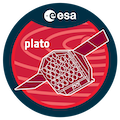Speaker
Description
Over the past two decades, an extraordinary revolution has ensued in our understanding of planetary systems beyond our own, driven largely by the transit missions Kepler and TESS - and soon to be with PLATO. Because the transiting missions have relatively poor spatial resolution, high resolution imaging has become standard practice in the vetting of planetary candidates as the community works towards confirmation of a planetary transit as the source of the observed signal. Our group has become one of the largest providers of such high-resolution imaging, with near-infrared adaptive optics imaging on Keck and Palomar and with optical speckle imaging on Gemini North and South. The high resolution imaging, in combination with Gaia, has enabled us to characterize the stellar multiplicity of the planetary sytems discovered by Kepler and TESS - and will be crucial to the discoveries of PLATO. In particular, the identification of nearby (bound and unbound) stellar companions is necessary to obtain the correct planetary radius as unseen companions make detected planets look smaller and small planets harder to detect - affecting our ability to characterize planets correctly, find small planets, and accurately predict the frequency of small planets. I will give an overview of our decade-and-half-long program, the role our program plays in the confirmation of planets, and an assessment of the stellar multiplicity and characteristics of the planets found in those systems.

